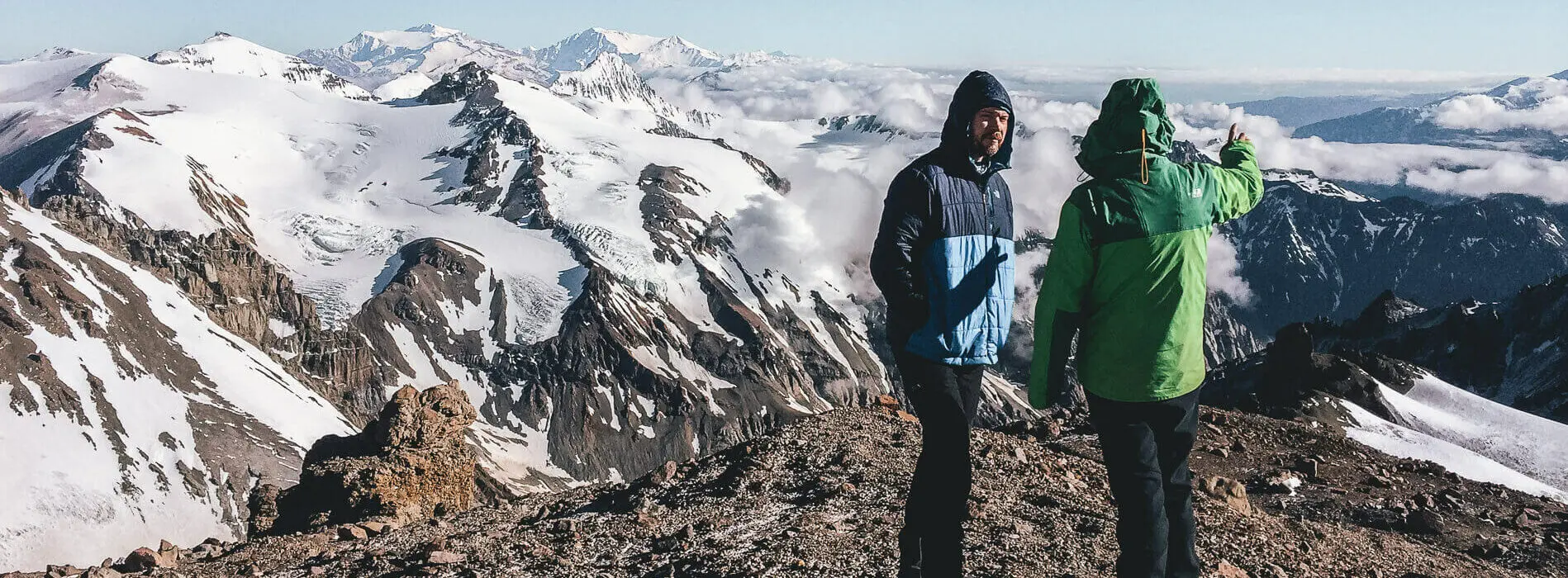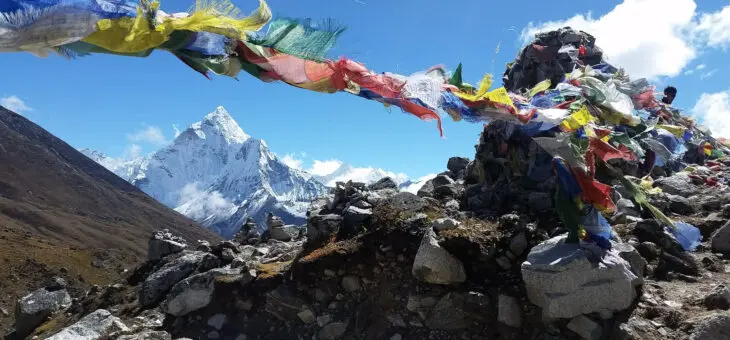Early into the summit day of Aconcagua, when the sun begins to rise on the far side of the mountain ahead of you, and the sky starts to turn slowly from black to blue, there’s a point where you look back and see a perfect triangular shadow of the peak spread across the peaks of the Andes behind and below you. It’s an amazing sight, and terrifying. You realise how far you’ve come and how high you’ve climbed: for our group, higher than any of us had been before; higher than the rest of the Andes; higher than Mont Blanc; higher than Kilimanjaro; and higher than most people will ever be. You also realise that you’re still at the base of the triangle, that the summit is 800 meters above us and that there’s eight hours of climbing ahead before we reach it. At that moment, while the rest of the team scrambled to take photos of a shadow five miles long, I remember thinking “my toes are frigging freezing, I wish I was back in bed”.
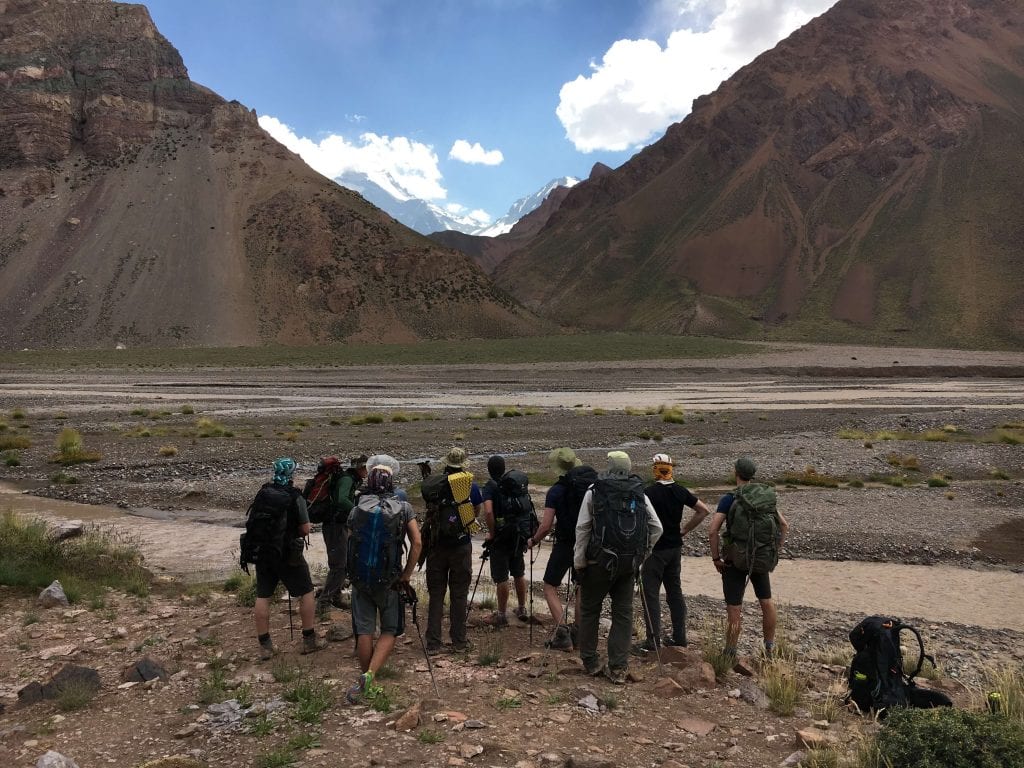
I’m not a mountaineer. None of us in the Earth’s Edge team were. Four of us signed up together: a recruitment consultant, a shop-owner, a computer salesman, and an accountant. We were joined by a pub manager, a local politician, a farmer, a doctor, and a vet. All pretty normal people. We had various levels of fitness and different amounts of experience on mountains. For all of us, this was meant to be a holiday. We were somehow united by a willingness to spend the day trekking, carrying heavy packs on our backs, and go without showers for weeks, while sharing very small tents with strangers. All with the goal of getting to the top of the highest mountain in South America. We didn’t remain strangers for long.
One annoying aspect about climbing Aconcagua, is that very few people have heard of it, so even after a successful summit attempt, it’s difficult to gloat. People forget or mishear the name and mutter some mixture of Nicaragua and Anaconda. One of the lads from the trip will only refer to the mountain as “the highest summit in the western world”; but my non-hiking friends, rather than remembering the name, find it easier to call my trip “Adventure on Poo Mountain”, referring to the very necessary but hugely unpleasant rule about not leaving waste of any kind on the mountain.
Aconcagua is a two week expedition; twelve days up and two days down. But the whole trip boils down to the summit attempt. It’s not a technical mountain, you don’t need much more skill than the ability to put one foot in front of the other; but a lot of effort and planning goes into getting to high camp with all food, water, tents and climbing gear intact, while remaining rested, hydrated and well enough acclimatised to the 6,000m altitude to get some sleep. Mules help transport a lot of the gear from the trailhead to basecamp, but from basecamp up, it’s all human power. The fact that it is too cold and too high for the mules to survive (or any other animal or plant life) should have given us a bit of a clue about what to expect.
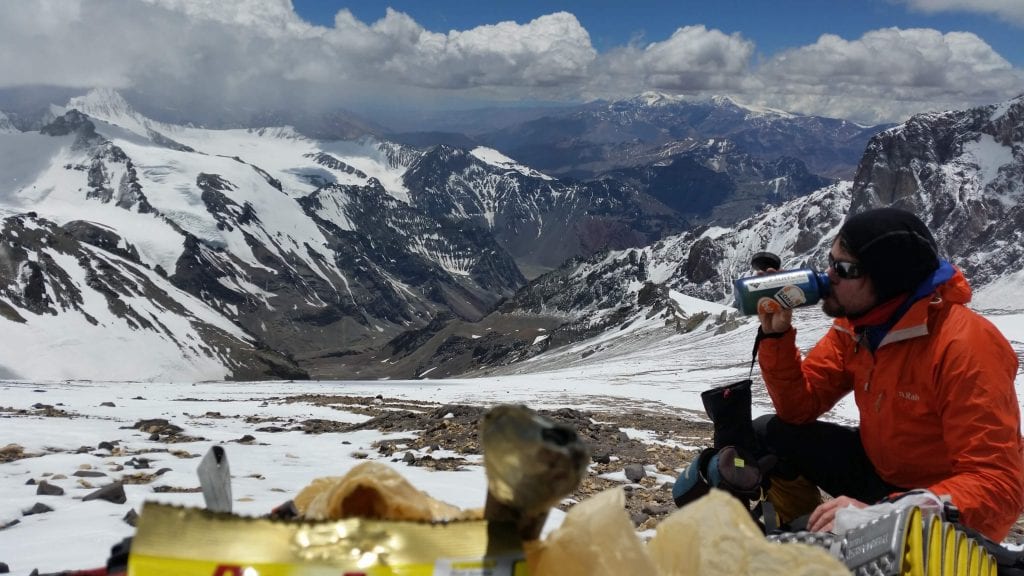
Earth’s Edge took us out for a number of training hikes in advance of heading to Argentina. On each trip, we were advised to wear our heavy double plastic boots, carry a 20kg bag on our backs and bring any new equipment for the expedition team to look over and assess for suitability. It was all invaluable and went towards making our trip a successful one. But we couldn’t prepare for the altitude. At just under 7,000m, a deep breath gets you about 43% of the oxygen it would at sea level. That really takes its toll.
During the summit attempt, once the sun had risen and warmed us up a little, our guides kept pointing out that getting to the top was less than half the battle – if we couldn’t get back down safely before it got dark again, we were better off turning back now. We were reminded that if we turned back sooner rather than later, we’d give the rest of our team a better chance of summiting. This wasn’t an attempt to discourage us or dissuade us from our stab at the summit, just an appeal for honesty. The guides couldn’t know how fit we were feeling unless we told them. And every time the head guide told that we needed to be honest with ourselves and to turn back if we weren’t sure if we would made it, I knew, absolutely knew, with complete certainty, that he was talking to, and talking about, me. And every time, we started walking again only moments before my will broke and I put my hand up to say that I wasn’t able to make it and I was turning back. Next time, I’d tell myself, next time we rest, I’ll tell him he’s right and that I’m not strong enough. But every time we paused, and every time he made the speech, I hesitated just long enough to keep going.
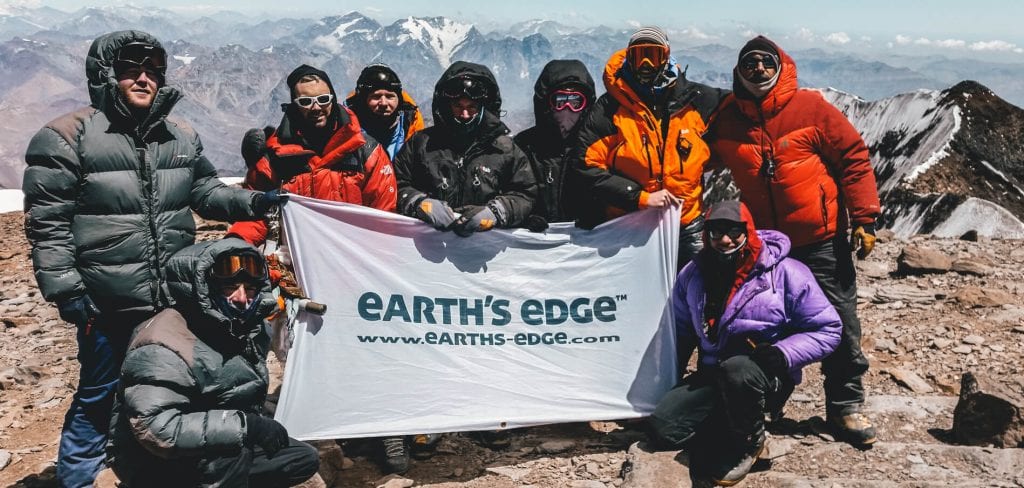
The final push for the summit on Aconcagua is very public. All the paths converge, you start passing people who are coming down as you’re still going up, and the track turns inward in a half-moon shape, so you can see everyone ahead of you. You see them reaching the summit, and seem them coming back towards you. We had perfect weather and perfect visibility and on that last section it all looked so close and so easy. At sea-level or while training in the Wicklow hills, this last 200m stretch with a clear path and a slight slope would have taken no time at all. But at altitude, you keep taking steps, but the summit doesn’t get any closer. I could see some of the Earth’s Edge team, twenty meters ahead of me, but I couldn’t catch them even if I kept walking while they paused. The rest of our team were twenty meters behind me, but they didn’t get any closer, no matter how often I stopped or how slowly I moved. And I was moving very slowly at the end. Towards the end, every step took four deep breaths: One step. Deep breath. Deep breath. Deep breath. Deep breath. And finally another step. And you’re exhausted all over again.
It was tough, but we were lucky. We had great clear weather and could see the whole of the Andes from the summit once we got there. We had no fresh snow and no ice on the path, so we didn’t need our crampons, ice-axes or climbing harnesses. Our weather window opened wide for us. It was still the toughest thing I had ever done and all the more rewarding for that.
It’s well over a year now since I was on the summit of Aconcagua, and nearly two and a half years since I met the shop-owner in a Dublin pub and decided over after-work pints to sign up for the trip. If I could have felt that evening how painfully cold my toes would be for the first two hours of summit night, I would have hesitated. If I could have experienced, when paying the deposit, the frozen gusts that would sting our faces when crossing the Canaleta, it would have given me pause. If I could have suffered on training hikes in Wicklow and Clare, the effort of each step and the struggle for each breath in the final push for the summit, I might have pulled out before ever getting on the plane. And if I could have predicted on the beginning of summit night, the flat empty exhaustion that I would later feel on reaching the summit, I probably would just have stayed in bed. But toes and faces warm up, effort and struggles are forgotten, and after a night’s sleep, the exhaustion fades. And what’s left now is elation and pride and awe of what was achieved by not making the effort to turn back. And those feelings are worth everything we went through to feel them. I’d sign up for more.
Dermot Magee.
____________________
Earth’s Edge run an expedition to Aconcagua each year in January. For more information contact James (jam@earths-edge.com) or visit our Climb Aconcagua Page.
